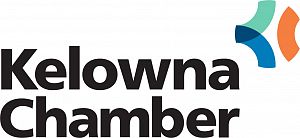“ How hungry are you?” A question that Ryan Walters frequently asks – and no, he isn’t referring to what he should make for dinner, or if you would like one serving or two. This former NHL wonder joined us for an inspiring night on Leadership last week, with TEC Canada and BDO, kicking off this great new series.
When talking about leadership, there are a few key things that likely come to mind. What is it that makes a good leader? Are they born, or are they taught? “Both” Ryan says, “the four most common traits people look for in a leader are honesty, forward-looking, inspiration, and competency.” – and arguably, he may be right. If these are the traits that people identify as those a leader should have, it’s not only having those traits, but it’s learning how to show them. The easiest way? “Get them into your conversations,” says Ryan. Take forwards-looking as an example. Saying that you are looking forwards to meeting someone, or catching up, is an easy way of connecting with them on a more meaningful level and reiterating this positive leadership trait; a win-win situation. It’s working these qualities into our daily lives, and it’s identifying how to be the best leaders we can be.
Another key to effective leadership that Ryan identified was positive business interactions. As explained by Ryan, “a business with 5 positive interactions to 1 negative interaction is just doing ‘good,’ it’s those with 6,7 and even 8 positive interactions that are really showing noteworthy leadership!”
Summed-up in a diagram (perfect for those logical thinkers) we get this:
In short, the ‘P’ and ’F’ stand for past and future with the +/- referring to positive and negative. The past negatives are those events that deflate you. They aren’t usually the best to remember and tend to get you down – sort of like an ex as pointed out by one participant. The future negatives are those events that evoke fear in us. “I’m going to lose.” “Today is going to be a bad day.” These are the events that paralyze us. Together, these two things maker up what Ryan calls the ‘defensive zone,’ putting a clever spin on hockey terminology. This is a mindset that we often find ourselves in during times of change and re-evaluation.
The upper half of the diagram then, is our offensive counterpart. This makes up the “You can do it,” and “it’s going to be okay” type of mindsets; the lighter, more positive side of things. We may find ourselves here during a period of growth, or change. These are the qualities that both regenerate and activate our cultures. Being able to evaluate where it is we sit, and how we can get to where we, as leaders, want our organizations to be is an important ability to have.
So, we will leave you with the question – where do you see yourself? Where do you see your organizational culture? And how can you do better? – or, as Ryan would put it, “How hungry are you”?

-KCC

